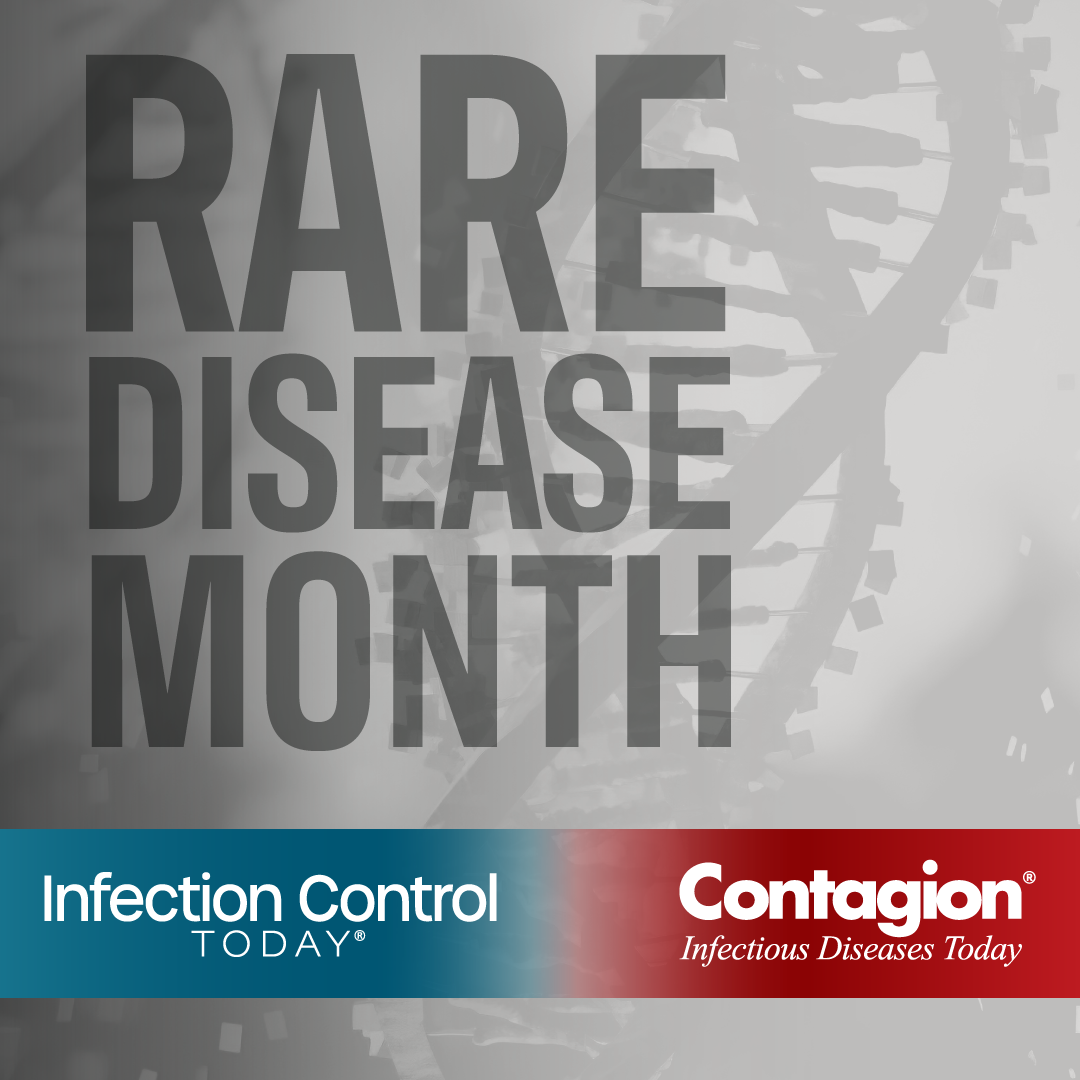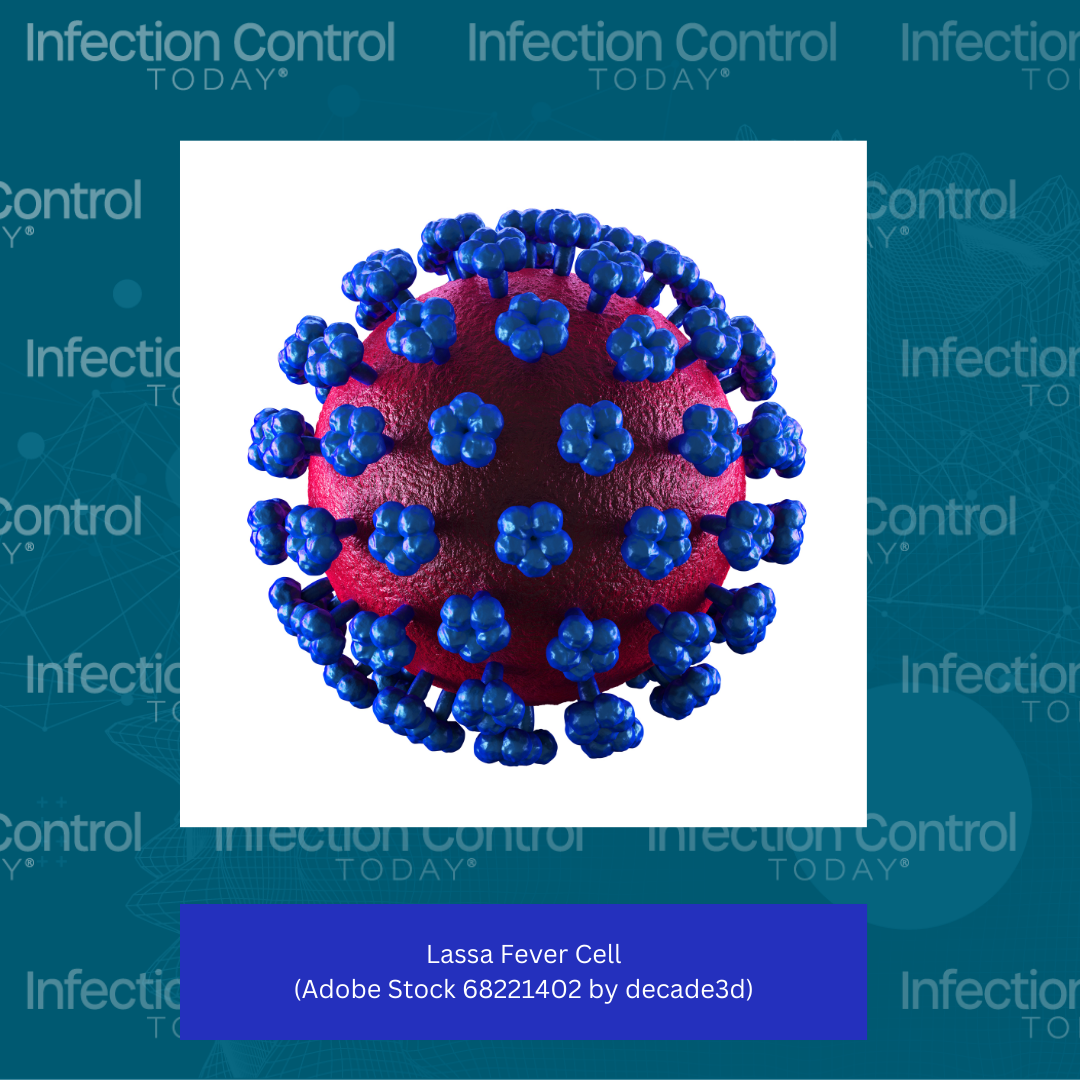Lassa Fever: What Is It, and How Do We Fight It?
Lassa fever causes 5000 deaths a year. What should health care workers and the public know about this rare disease, and what is done to treat it?
Rare Disease Month: A collaboration of ContagionLive and Infection Control Today.

For the month of February 2024, Infection Control Today® and Contagion®Live are collaborating on rare infectious diseases for Rare Disease Awareness Month, examining both old and new infectious diseases that health care workers need to know.
Fever is a type of hemorrhagic fever that is commonly found in West Africa, specifically in countries like Sierra Leone, Liberia, Guinea, and Nigeria. This disease is caused by the Lassa virus and can be transmitted to humans when they come into contact with infected rodents or their bodily fluids. Symptoms of the illness include fever, headaches, muscle pain, and bleeding. In severe cases, it can result in organ failure and even death.
The Lassa fever treatment Market is witnessing significant growth due to the increasing number of Lassa fever cases worldwide. Lassa fever poses a health threat in affected regions, with an estimated annual occurrence of 100,000 to 300,000 cases and approximately 5,000 deaths, according to the CDC.
Research Nester Analysis predicts that the Lassa fever treatment market will exceed $480 million by the end of 2036 with a projected compound growth rate of around 13% during the forecast period from 2024 to 2036. In 2023, the size of the Lassa fever treatment industry was $24 million. The disease predominantly affects areas with limited access to health care resources, making diagnosis and effective treatment challenging.
There is an urgent need for enhanced treatment approaches for Lassa fever, as current care mainly focuses on supportive measures like fluid replacement and electrolyte balance along with antiviral medication. Moreover, specific antiviral therapies targeting the Lassa virus are lacking.
Impact on Public Health
Lassa fever is commonly found in regions of West Africa, especially Nigeria, where it is believed to result in numerous fatalities annually. This illness presents a public health concern due to its high mortality rate and the limited accessibility of effective treatments and vaccines. The primary strategies for managing Lassa fever revolve around preventing the virus from spreading through enhanced hygiene measures, controlling rodents, and raising awareness through campaigns.
Lassa Fever Cell
(Adobe Stock 68221402 by decade3d)

Conventional Treatment Options
When it comes to the treatment of Lassa fever, conventional treatment choices are accessible. These choices primarily concentrate on symptom management, offering care, and utilizing antiviral medications to combat the virus.
- Antiviral medications: Antiviral medications such as Ribavirin are effective in treating Lassa fever. It has spectrum antiviral properties and is specifically utilized for the treatment of hepatitis C. These medications work by suppressing the replication of the virus and mitigating the severity of symptoms. Their optimal efficacy is observed when administered promptly after the onset of the illness.
- Supportive care: Supportive care is crucial when it comes to treating Lassa fever. This involves administering intravenous fluids through an IV to prevent dehydration, providing medication for pain relief, and effectively managing symptoms like fever and vomiting.
- Isolation: It is extremely important to isolate the patient in order to stop the virus from spreading to people. Individuals who are affected by Lassa fever should be placed in a designated isolation unit, and health care professionals must strictly adhere to infection control protocols.
- Monitoring and surveillance: To evaluate the advancement of the disease and make treatment choices it is important to regularly monitor vital signs and conduct laboratory tests. Additionally, surveillance systems are in operation that help track the transmission of Lassa fever and detect outbreaks.
Under Investigation: Promising Vaccine Candidates
Researchers are currently conducting studies toward developing a vaccine for Lassa fever. They are investigating potential vaccine candidates who have shown effectiveness in primates. Many of these candidates utilize attenuated viral vectors that express surface glycoproteins and the nucleoprotein of the Lassa virus. The success of these vaccines in monkeys appears to rely on stimulating lymphocyte responses, which is likely similar to the immune mechanisms observed in humans who have survived Lassa fever. These vaccine strategies show promise for development.
Addressing the Underlying Causes
Holistic medicine adopts a comprehensive strategy in dealing with Lassa fever by examining and addressing the root causes of the disease. This involves identifying and treating any imbalances or dysfunctions within the body that might be involved in the onset or advancement of the illness.
Best Practices From Government And Other Countries
Lassa fever is a highly contagious disease that is commonly found in West Africa. Since 2016, the Nigeria Centre for Disease Control (NCDC) has collaborated with institutions to enhance the ability to diagnose Lassa fever. Currently, the NCDC National Reference Laboratory (NRL) is coordinating a network of 7 laboratories across the country for testing and identification of this disease.
Moreover, several ongoing awareness campaigns and programs are aimed at combating Lassa fever in affected regions. These include:
- The National Lassa Fever Control Program, which provides education and training to health care workers and the public on how to prevent and treat Lassa fever.
- The Lassa Fever Outbreak Response Team, which coordinates the response to Lassa fever outbreaks and provides support to affected communities.
- The Lassa Fever Surveillance System, which monitors Lassa fever cases and outbreaks in affected regions.
Prevention and Lifestyle Changes
Hygiene Practices
Practicing good hygiene is essential in preventing the spread of Lassa fever. Here are some hygiene practices to follow:
For health care workers:
- Wash hands frequently with soap and water, especially after patient contact, before and after procedures, and after touching any potentially contaminated surfaces.
- Use hand sanitizers containing at least 60% alcohol in clinical settings when soap and water are not available.
- Avoid touching the face, particularly the eyes, nose, and mouth, to reduce the risk of infection.
- Cover the mouth and nose with a tissue or elbow when coughing or sneezing to prevent spreading germs.
For the public:
- Wash hands regularly with soap and water, especially after using the bathroom, before eating, and after touching surfaces in public areas.
- Use hand sanitizers with at least 60% alcohol when soap and water are not accessible.
- Refrain from touching the face, particularly the eyes, nose, and mouth, to minimize the risk of infection.
- When coughing or sneezing, cover the mouth and nose with a tissue or elbow, and dispose of used tissues properly.
Avoiding Contact with Rodents
Lassa fever is primarily transmitted to humans through contact with infected rodents. Here are some measures to avoid contact with rodents:
- Keep your living environment clean and free of rodents by regularly cleaning and disinfecting areas where rodents may nest or hide.
- Seal any cracks or openings in your home that may provide entry points for rodents.
- Store food in rodent-proof containers and dispose of garbage properly to prevent attracting rodents.
- Avoid direct contact with rodents, including touching or handling them, as well as their urine, droppings, and nesting materials.
Lassa fever is an illness that needs quick identification and treatment to minimize complications and fatalities. Detecting and treating the disease early is crucial in lessening the severity of symptoms and the likelihood of death. Hence, it is vital for nations to possess resources for detecting, diagnosing, and treating Lassa fever. Furthermore, raising awareness about the illness and implementing preventive measures can help decrease the risk of getting infected.
Show, Tell, Teach: Elevating EVS Training Through Cognitive Science and Performance Coaching
April 25th 2025Training EVS workers for hygiene excellence demands more than manuals—it requires active engagement, motor skills coaching, and teach-back techniques to reduce HAIs and improve patient outcomes.
The Rise of Disposable Products in Health Care Cleaning and Linens
April 25th 2025Health care-associated infections are driving a shift toward disposable microfiber cloths, mop pads, and curtains—offering infection prevention, regulatory compliance, and operational efficiency in one-time-use solutions.
Phage Therapy’s Future: Tackling Antimicrobial Resistance With Precision Viruses
April 24th 2025Bacteriophage therapy presents a promising alternative to antibiotics, especially as antimicrobial resistance continues to increase. Dr. Ran Nir-Paz discusses its potential, challenges, and future applications in this technology.